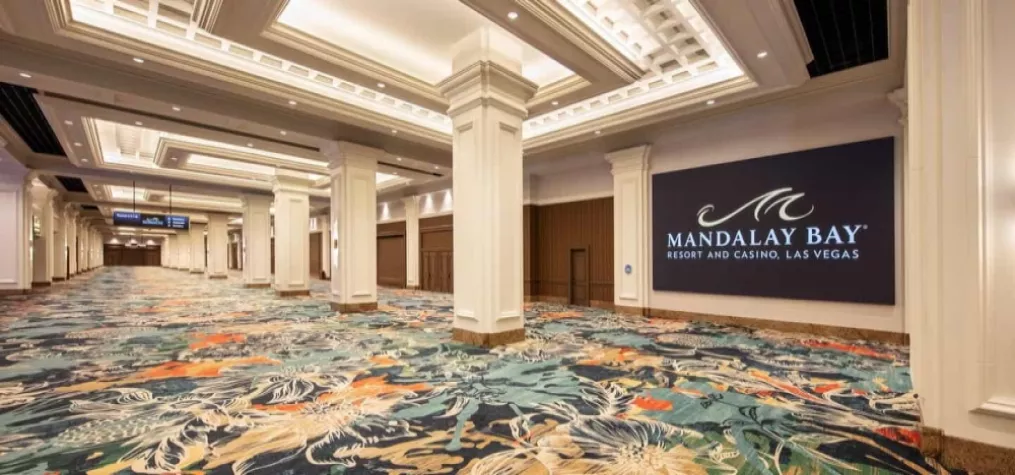Lauren Kane

Lauren Kane is Chief Strategy Officer for Morressier, a company that provides virtual conference software for academic and professional organizations.

When COVID-19 hit and dashed all travel plans, the scholarly community saw a wave of conference cancellations and a rapid scramble to virtual formats. Nine months down the line (and with another wave of the virus bearing down in many countries) it has become increasingly clear that conferences will not be returning to their pre-COVID formats any time soon. This is the new normal, one that offers a rare opportunity to reframe the traditional conference format and create better, more inclusive ways to bring the scholarly community together.
Looking ahead, we strongly believe that a hybrid approach (including a live, in-person event and virtual online component) presents the best future strategy for most conference organizers. Hybrid conferences support the invaluable human connections forged via a chance discussion over drinks or an astute comment whispered in a lecture audience. At the same time, a hybrid approach embraces the benefits offered by virtual conferences, including greater flexibility, accessibility and global inclusivity.
But how can we ensure hybrid meetings are cohesive and provide equal value for both physical and virtual attendees without making the audience feel like they are attending two separate events?
Brian Lovett, a post-doctoral researcher in the Division of Plant and Soil Sciences at West Virginia University, argues that sophisticated technology must be leveraged to effectively bring the off- and online realms together. Well before the COVID outbreak, he was already campaigning or a revamped conference system, one that includes virtual capabilities to foster impactful scientific discourse and broadcast a broader range of voices.
“To date, changes to the traditional conference format have for the most part been incremental, such as the addition of a new kind of session or an app that holds the scientific program,” Lovett says. “There is room for bolder changes that open the doors for more to participate and reimagines the format of scientific sessions to be more dynamic, instead of trying to simply transition what has been done onto a video conference.”
Lovett suggests that bi-directional livestreams — sharing both what is happening on-site and online to the respective audiences — can help connect the in-person and digital experience and take virtual attendees out of a passive role. Post-presentation Q&A sessions, for example, can include questions from both online and on-site attendees, supporting this critical interaction with presenters without requiring them to be in the same location physically.
Of course, coordinating a hybrid conference involves a different planning process than traditional events. When mapping out the delegate journey, organizers must take special consideration of their online audience. While online attendees don’t have to walk down the block to find the next session, they still benefit from scheduled breaks to avoid digital fatigue.
Social activities involving a cross-section of in-person and virtual attendees can ensure everyone stays engaged throughout the meeting and provide networking opportunities across the two audiences. A good virtual conference platform and on-site app can also provide interactive features to enable rapid, visual feedback on conference topics for the entire audience.
Dedicated staff should be on hand to guide interactions and help cross the virtual divide, including by assigning in-room hosts to remote participants. Such a system offers another route for virtual attendees’ voices to be heard and increases networking opportunities, a key part of the meeting experience that can be restricted in an online format. Conferences should also provide a backstage, staffed ‘speakers’ lounge’ for virtual presenters, where they can familiarize themselves with the conference technology, interact with one another, ask questions and prepare for their upcoming panel or presentation much as they would on-site.
While on-the-day participation is essential to running a successful event, one of the benefits of hybrid conferences is the ability to have both synchronous and asynchronous communication. Meetings are no longer only about the conversations happening in the moment, but can also include pre-and post-meeting activities to encourage engagement across an extended event lifecycle.
Shalini Prasad, Ph.D., head of the Department of Bioengineering and Biomedical Engineering at University of Texas at Dallas, believes the potential to capture conference posters, videos and presentations long-term is particularly beneficial for the research community.
“All conferences should provide an archival platform going forward — especially in the interest of open access and sharing. If a researcher is willing to present their information at a conference, they should have no issue having it and any video presentations available digitally in this way as well," Prasad says.
This capacity to offer post-conference access not only increases research dissemination, but also opens up new ticketing options for organizers. Many are now looking at different pricing levels for their event — the highest tier being an in-person ticket, followed by a live virtual attendance ticket and finally post-conference access to on-demand content. Providing a range of attendance options opens up conferences to a wider audience and increases access for researchers in different time zones or with limited budgets, including early-career researchers.
As we reflect on the lessons of 2020, what’s most clear is that the future is unclear. In the case of academic and professional conferences, it looks like virtual will dominate the event landscape for the time being. Yet as we plan for the ideal conference in a post-pandemic world, let’s do our best to ensure attendees have the same opportunities for engagement and professional development, whether they are sitting in a conference hall in Texas or a home office in Sydney.
Don’t miss any event-related news: Sign up for our weekly e-newsletter HERE and engage with us on Twitter, Facebook, LinkedIn and Instagram!

Add new comment